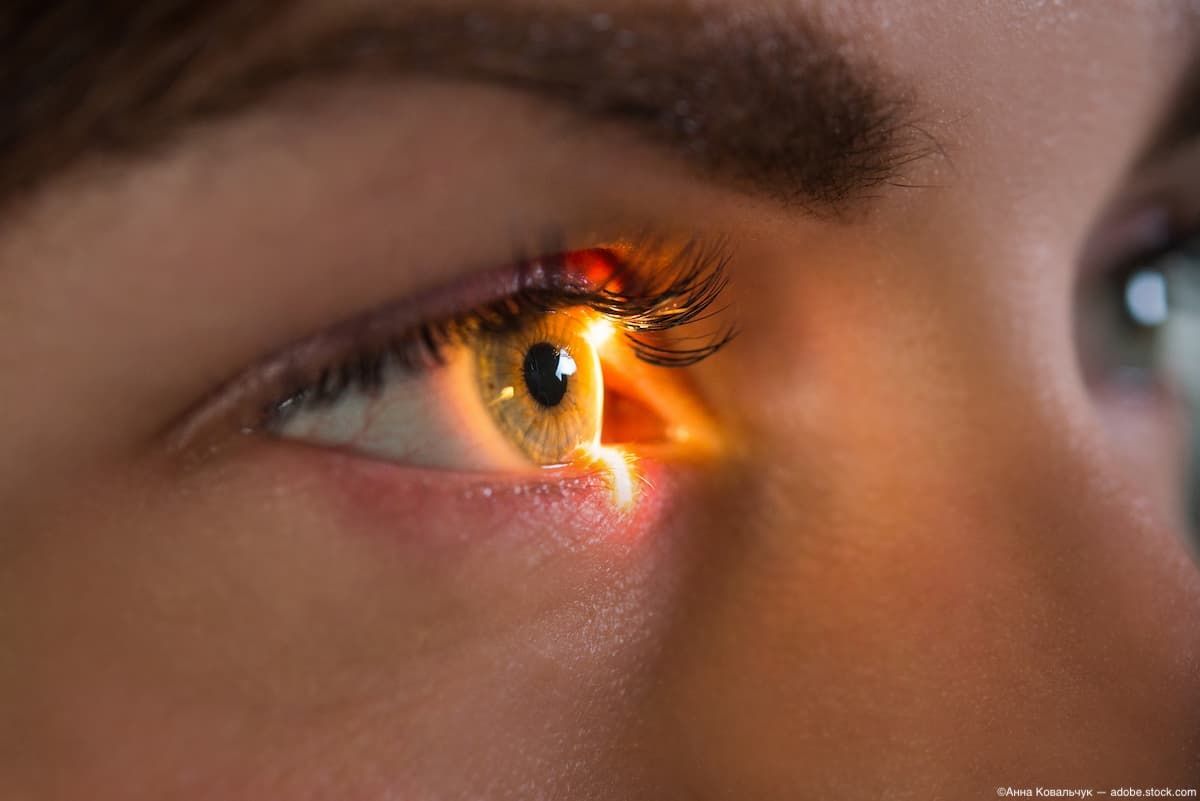AI screens for autism in the blink of an eye
According to researchers, the strongest biomarker was achieved from a single bright flash of light to the right eye, with AI processing significantly reducing the test time.
Image Credit: ©Анна Ковальчук - adobe.stock.com

Artificial Intelligence can utilize one flash of light to the eye to unlock myriad mysteries, including offering a quicker and more accurate method of diagnosing autism spectrum disorder (ASD) in children, according to research from the University of South Australia and Flinders University.
Using an electroretinogram (ERG), a diagnostic test that measures the electrical activity of the retina in response to a light stimulus, researchers have deployed AI to identify specific features to classify ASD.
According to a news release, measuring retinal responses of 217 children aged 5-16 years (71 with diagnosed ASD and 146 children without an ASD diagnosis), researchers found that the retina generated a different retinal response in the children with ASD as compared to those who were neurotypical.1
The team also found that the strongest biomarker was achieved from a single bright flash of light to the right eye, with AI processing significantly reducing the test time. The study found that higher frequency components of the retinal signal were reduced in ASD.
Conducted with University of Connecticut and University College London, the test could be used to determine whether the results could be used to screen for ASD among children aged 5 to 16 years with a high level of accuracy.1
ASD is a neurodevelopmental condition characterized by difficulties in reciprocal social interactions, communication, and repetitive/restrictive behaviors.
According to the Centers for Disease Control and Prevention, an estimated 5.4 million Americans (2.2 percent) are on the autism spectrum.2 Globally, rates of autism vary, with World Health Organization noting the prevalence at 1 in every 100 children.3
Fernando Marmolejo-Ramos, PhD, a UniSA researcher, pointed out that the test could provide clinicians with an improved method for ASD diagnoses, fast-tracking much-needed support for thousands of children on the spectrum.
“Early interventions and appropriate support can help children with ASD improve their quality of life, but right now, there is no simple ‘test’ for ASD which means that individuals often require lengthy psychological assessments and reports to get a diagnosis,” Marmolejo-Ramos said in the news release.
Marmolejo-Ramos pointed out that the test is much quicker, and the use of a RETeval electroretinogram testing unit can collect date and complete a screening for autism in about 10 minutes.
“This is a massive step because it alleviates time, stress and money for parents and their children,” Marmolejo-Ramos said in the news release. “Importantly, the test is non-invasive and tolerated well by children, which makes the process so much easier for all involved.”
Paul Constable, PhD, BSc Optom, ACO, the project lead and a researcher at Flinders University, pointed out that with the eye connected to the brain, looking into the eye can help researchers understand the brain lets us learn more about how the brain develops in people with ASD.
“It’s very exciting to begin to look at new ways of using the electroretinogram with signal analysis and machine learning to help classify ASD with greater accuracy,” Constable said in the news release. “We still need to look at younger children and also those with other conditions such as attention deficit hyperactivity disorder to see how specific this test might be, but this is an important first step.”
Moreover, Hugo Posada-Quintero, a co-researcher and assistant professor in the Department of Biomedical Engineering at the University of Connecticut, noted in the news release the next steps will be to extend the research to look at other cohorts and diagnostic categories.
“Our study demonstrates the promising potential of analyzing retinal responses using advanced signal processing and machine learning techniques to aid in the identification of neurodevelopmental conditions like autism spectrum disorder,” Posada-Quintero concluded in the news release. “With further research and technological development, these analytic methods could be developed into practical tools to help clinicians accurately and efficiently screen for and diagnose ASD and related disorders.”
Reference:
Posada-Quintero, H., Manjur, S., Hossain, Md., Marmolejo-Ramos, F., Lee, I., Skuse, D., Thompson, D., & Constable, P. (2023). Autism Spectrum Disorder Detection using Variable Frequency Complex Demodulation of the Electroretinogram. Research in Autism Spectrum Disorders, 109, 102258. https://doi.org/10.1016/j.rasd.2023.102258
Key findings: CDC releases first estimates of the number of adults living with autism spectrum disorder in the United States. Centers for Disease Control and Prevention. April 7, 2022. Accessed December 21, 2023. https://www.cdc.gov/ncbddd/autism/features/adults-living-with-autism-spectrum-disorder.html.
Autism. World Health Organization. Accessed December 21, 2023. https://www.who.int/news-room/fact-sheets/detail/autism-spectrum-disorders.
Newsletter
Keep your retina practice on the forefront—subscribe for expert analysis and emerging trends in retinal disease management.